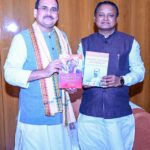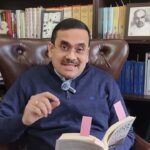DIFFUSING NATURE OF CULTURAL BOMBS
- By : Anirban Ganguly
- Category : Articles
India’s cultural icons must be effectively reached out to and rediscovered in the present struggle to narrate the new story of a changing India
Kenyan thinker, author and a leading voice of Africa’s cultural struggle, Ngugi wa Thiong’o, in his celebrated book, Decolonising the Mind (1981), has talked about the ‘cultural bomb’ as a hegemonistic weapon used by dominant powers and intellectual groups to continue to control, manipulate and subjugate the identities and sense of selfhood of less organised or less articulate collectivities or civilisations which have fallen in a present state of disarray due to suppression by dominant colonial forces in the past.
Describing the uses of such a weapon, Mr Thiong’o observes that the effect of a ‘cultural bomb’ was to ‘annihilate a people’s belief in their names, in their language, in their environment, in their heritage of struggle, in their unity, in their capacities and ultimately in themselves. It makes them see their past as one wasteland of non-achievement and it makes them want to distance themselves from that wasteland. It makes them want to identify with that which is furthest removed from themselves.’
The Indian experience in dealing with the ‘cultural bomb’ has, interestingly, been similar. The flag bearers of a colonial Indology, who have largely been the couriers and the implanters of the ‘cultural bomb’ in this country, have always, in collaboration with the original manufacturers of that ‘bomb’ ensured that the Indian past is perceived and continues to be seen as ‘one wasteland of non-achievement’. The portrayal, thus, of Indian — especially of Hindu — traditions as possessing disjointed and strange elements with disruptive, coercive and oppressive attributes became the standard fare. Such a conjured reading was passed off and institutionalised as the real description of India while suppressing other readings which spoke of a civilisation that had attained great heights. It was the perpetuation of a sort of a cultural-civilisational imperialism.
There were, exceptions and resisters to these ‘cultural bomb’ planters and some of them came from their own ranks. Sri Aurobindo in his essays on Indian culture elaborated on this section and its contribution to the understanding of the ideals and fundamentals of Indian culture. “There are”, he wrote, “different ways of seeing a foreign civilisation and culture. There is the eye of sympathy and intuition and a close appreciative self-identification…These are attempts to push aside all concealing veils and reveal the soul of a people. It may well be that they do not give us all the hard outward fact, but we are enlightened of something deeper which has its greater reality…”
In this category of the reading of India, Sri Aurobindo included Sister Nivedita’s works, especially her Web of Indian Life, John Woodroffe’s contributions to the study of Indian civilisation and a few others. These scholars were not academics who, ensconced in the rarefied confines of the academia, were busy dissecting India through Western instruments, but were those who earnestly strove give up their past conditioning and to truly understand the dimensions of a people and civilisation they were trying to identify with. Their inquiries and studies revealed to them the richness and vibrancy of a unique civilisation as opposed to the wasteland picture.
This section made conscious efforts to out-grow Swami Vivekananda’s description of the ‘uneducated foreigner who comes globe-trotting’ and ‘takes a vanishing railway view of India and lectures most learnedly on the awful evils of India’. When Sister Nivedita wrote of the ‘spirit of Hindu culture’ becoming the ‘music of life’ she was essentially undergoing a deeply transformative process. It is these interpreters of India that need to be rediscovered and highlighted in the struggle for evolving a just and fair self-image. “There are a number of us in Europe”, wrote Romain Rolland in his introduction to the Dance of Shiva, “for whom European civilisation no longer suffices — dissatisfied children of the spirit of the West, who feel ourselves cramped in our old abode…We few look towards Asia.”
It is these few who must be effectively reached out to and rediscovered in the present struggle of narrating India.

















